Even mixing oil paints is an art - but a lot of old knowledge about it has been lost over the centuries. From around the 15th century, painters such as Leonardo da Vinci, Sandro Botticelli, Albrecht Dürer or Rembrandt mixed proteins - such as egg yolk - into their oil paints.
In an experimental study, a German-Italian research team has now determined the advantages of this addition. These include better brushability, fewer wrinkles and cracks when drying, and greater chemical resistance of the colors.
It is generally known that oil is sufficient as a binder for the color pigments in oil paints, writes the group led by Ophélie Ranquet and Norbert Willenbacher from the Karlsruhe Institute of Technology (KIT) in the journal "Nature Communications". However, traces of proteins such as eggs were often detected in painting samples. "For a long time, people thought it was contamination," says Willenbacher. But the regular appearance of such components indicated that there was intention behind it.
"There's clearly more to making a color than just mixing the pigment with a binder," the team writes. Even in the Middle Ages, Italian painters mainly used egg tempera – i.e. pigments mixed with water and egg yolk as a binding agent. But as the 15th century progressed, oil paints came into use, and this probably caused problems, at least initially.
As a possible example, the team cites the picture "Madonna with the Carnation" - an early oil painting created around 1475 by the then still young da Vinci. The face of the Madonna shows wrinkles, so-called wrinkles, which are believed to have arisen when the paint dried. "That never happened to da Vinci," explains Willenbacher. "We suspect that he later added egg yolk to the oil paints."
Botticelli's painting "The Lamentation of Christ" from around 1490 verifiably contains egg yolk in several sampled areas. Even in tiny amounts, the yolk influences the stiffness of the colors, especially if they only have low pigment concentrations.
In the study, the team also tested different approaches to mixing pigments with linseed oil and egg yolk. Egg yolk can either be mixed into the already mixed oil paint, or the ground color pigments are first mixed with egg yolk, then dried and then rubbed with linseed oil so that they are encased in a protein layer in the oil.
This protects paints from absorbing moisture from the environment and also allows a higher pigment content in the paint with good brushability at the same time. A higher pigment content, in turn, leads to higher resistance to cracking and reduces yellowing and other color changes.
Especially with the first recipe - i.e. the subsequent addition of egg yolk - very stiff stains are created that can be applied thickly and at the same time very easily with the brush. In addition, the strength of the lower layers during drying prevents the paint surface from cracking, thus preventing wrinkles and cracks. But that's not all: the yolk contains antioxidants that preserve the original color for a long time, the team writes.
"This analysis forces us to think differently," says co-author Patrick Dietemann of the Bavarian State Painting Collections in Munich. "It makes sense to use egg additives in oil paints."
The group writes that old masters such as Botticelli, da Vinci or Rembrandt used protein-based binders in different ways for their artworks. With these techniques they would have avoided problems and "give us the opportunity to still admire their masterpieces today".
"Aha! Ten minutes of everyday knowledge" is WELT's knowledge podcast. Every Tuesday, Wednesday and Thursday we answer everyday questions from the field of science. Subscribe to the podcast on Spotify, Apple Podcasts, Deezer, Amazon Music, Google Podcasts or directly via RSS feed.

 B:SM will break its investment record this year with 62 million euros
B:SM will break its investment record this year with 62 million euros War in Ukraine: when kyiv attacks Russia with inflatable balloons loaded with explosives
War in Ukraine: when kyiv attacks Russia with inflatable balloons loaded with explosives United States: divided on the question of presidential immunity, the Supreme Court offers respite to Trump
United States: divided on the question of presidential immunity, the Supreme Court offers respite to Trump Maurizio Molinari: “the Scurati affair, a European injury”
Maurizio Molinari: “the Scurati affair, a European injury” First three cases of “native” cholera confirmed in Mayotte
First three cases of “native” cholera confirmed in Mayotte Meningitis: compulsory vaccination for babies will be extended in 2025
Meningitis: compulsory vaccination for babies will be extended in 2025 Spain is the country in the European Union with the most overqualified workers for their jobs
Spain is the country in the European Union with the most overqualified workers for their jobs Parvovirus alert, the “fifth disease” of children which has already caused the death of five babies in 2024
Parvovirus alert, the “fifth disease” of children which has already caused the death of five babies in 2024 The A13 motorway will not reopen on May 1
The A13 motorway will not reopen on May 1 More than 1,500 items for less than 1 euro: the Dutch discounter Action opens a third store in Paris
More than 1,500 items for less than 1 euro: the Dutch discounter Action opens a third store in Paris 100 million euros in loans, water storage, Ecophyto plan… New measures from the executive towards farmers
100 million euros in loans, water storage, Ecophyto plan… New measures from the executive towards farmers “He is greatly responsible”: Philippe Martinez accuses Emmanuel Macron of having raised the RN
“He is greatly responsible”: Philippe Martinez accuses Emmanuel Macron of having raised the RN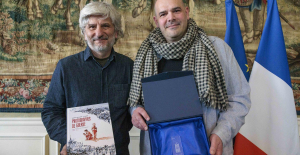 Les Galons de la BD dedicates War Photographers, a virtuoso album on the Spanish War
Les Galons de la BD dedicates War Photographers, a virtuoso album on the Spanish War Theater: Kevin, or the example of an academic failure
Theater: Kevin, or the example of an academic failure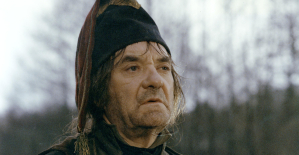 The eye of the INA: Jean Carmet, the thirst for life of a great actor
The eye of the INA: Jean Carmet, the thirst for life of a great actor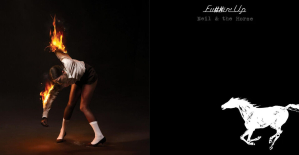 The Nuc plus ultra: St Vincent the Texane and Neil Young the return
The Nuc plus ultra: St Vincent the Texane and Neil Young the return Skoda Kodiaq 2024: a 'beast' plug-in hybrid SUV
Skoda Kodiaq 2024: a 'beast' plug-in hybrid SUV Tesla launches a new Model Y with 600 km of autonomy at a "more accessible price"
Tesla launches a new Model Y with 600 km of autonomy at a "more accessible price" The 10 best-selling cars in March 2024 in Spain: sales fall due to Easter
The 10 best-selling cars in March 2024 in Spain: sales fall due to Easter A private jet company buys more than 100 flying cars
A private jet company buys more than 100 flying cars This is how housing prices have changed in Spain in the last decade
This is how housing prices have changed in Spain in the last decade The home mortgage firm drops 10% in January and interest soars to 3.46%
The home mortgage firm drops 10% in January and interest soars to 3.46% The jewel of the Rocío de Nagüeles urbanization: a dream villa in Marbella
The jewel of the Rocío de Nagüeles urbanization: a dream villa in Marbella Rental prices grow by 7.3% in February: where does it go up and where does it go down?
Rental prices grow by 7.3% in February: where does it go up and where does it go down? Even on a mission for NATO, the Charles-de-Gaulle remains under French control, Lecornu responds to Mélenchon
Even on a mission for NATO, the Charles-de-Gaulle remains under French control, Lecornu responds to Mélenchon “Deadly Europe”, “economic decline”, immigration… What to remember from Emmanuel Macron’s speech at the Sorbonne
“Deadly Europe”, “economic decline”, immigration… What to remember from Emmanuel Macron’s speech at the Sorbonne Sale of Biogaran: The Republicans write to Emmanuel Macron
Sale of Biogaran: The Republicans write to Emmanuel Macron Europeans: “All those who claim that we don’t need Europe are liars”, criticizes Bayrou
Europeans: “All those who claim that we don’t need Europe are liars”, criticizes Bayrou These French cities that will boycott the World Cup in Qatar
These French cities that will boycott the World Cup in Qatar Paris 2024 Olympic Games: “It’s up to us to continue to honor what the Games are,” announces Estanguet
Paris 2024 Olympic Games: “It’s up to us to continue to honor what the Games are,” announces Estanguet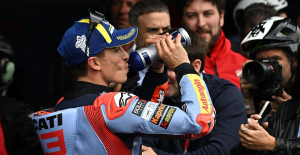 MotoGP: Marc Marquez takes pole position in Spain
MotoGP: Marc Marquez takes pole position in Spain Ligue 1: Brest wants to play the European Cup at the Stade Francis-Le Blé
Ligue 1: Brest wants to play the European Cup at the Stade Francis-Le Blé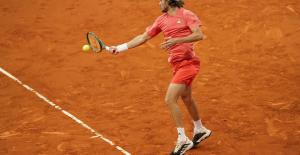 Tennis: Tsitsipas released as soon as he entered the competition in Madrid
Tennis: Tsitsipas released as soon as he entered the competition in Madrid


















